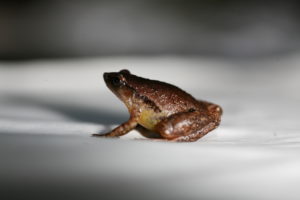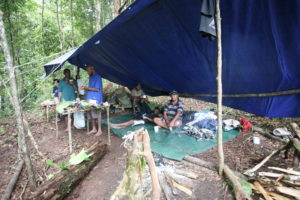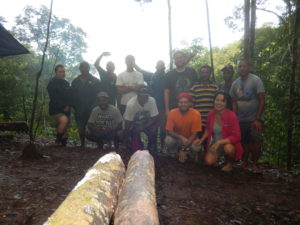Papua New Guinea is one of the most biodiverse and understudied places on Earth. The reptile and amphibian life on PNG seem to have greatly diversified to levels rarely seen. In particular, the speciose clade of microhylid frogs seems to have evolved specialized morphologies to exploit a variety of niches from the tops of trees to underground. The Papuan microhylids are thought to be an adaptive radiation with nearly 300 described species and many more yet to be found.

Copiula Oxyrhina
Our lab studies the evolution and biomechanics of this unique group. Our work has established the most robust and complete phylogeny to date. This work will lead to a major taxonomic overhaul of the clade.

Our local PNG collaborators taking a break before more frog work.
We are also interested in biomechanics, in particular, jumping, swimming and clinging. We performed several performance tests on several species of microhylids to study the relationship between ecology, morphology and performance.

Our field team from Mt. Gerebu, PNG.
This project is generously supported by a grant from the National Science Foundation  DEB-1145733 “Systematics and Adaptive Radiation of Papuan Asterophryinae Frogs
DEB-1145733 “Systematics and Adaptive Radiation of Papuan Asterophryinae Frogs